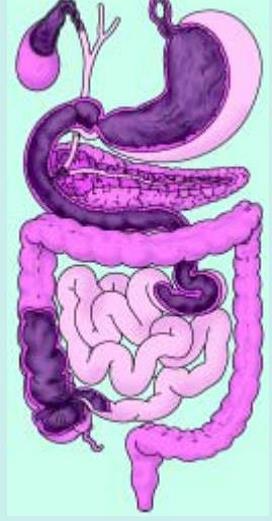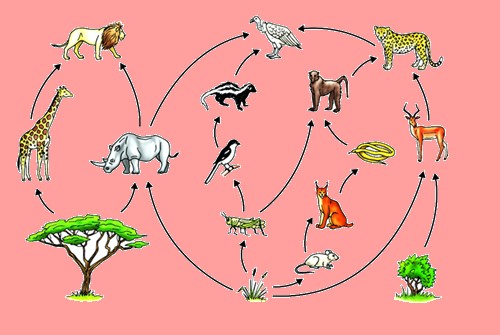Science
(www.olympiadsuccess.com)
Chapter 3: Fibre to Fabric
Class VII
Multiple Choice Questions
Question 1
The rearing of silkworms for obtaining silk is called
(a) cocoon
(b) silk
(c) sericulture
(d) silviculture
Answer
(c)
Question 2
Which of the following is not a type of silk?
(a) Mulberry silk
(b) Tassar silk
(c) Mooga silk
(d) Moth silk
Answer
(d)
Question 3
Paheli wanted to buy a gift made of animal fibre obtained without killing the animal. Which of the following would be the right gift for her to buy?
(a) Woollen shawl
(b) Silk scarf
(c) Animal fur cap
(d) Leather jacket
Answer
(a)
Question 4
Silk fibre is obtained from
(a) fleece of sheep
(b) cotton ball
(c) cocoon
(d) shiny jute stalk
Answer
(c)
Question 5
Wool fibre cannot be obtained from which of the following?
(a) Goat
(b) Llama
(c) Alpaca
(d) Moth
Answer
(d)
Question 6
Selective breeding is a process of
(a) selecting the offsprings with desired properties.
(b) selecting the parents with desired properties.
(c) selecting an area for breeding.
(d) selecting fine hair for good quality wool.
Answer
(b)
Question 7
The general process that takes place at a sheep shearing shed is
(a) removal of fleece.
(b) separating hair of different textures.
(c) washing of sheep fibre to remove grease.
(d) rolling of sheep fibre into yarn.
Answer
(a)
Question 8
The term sericulture is used for
(a) culture of bacteria.
(b) rearing of silkworm.
(c) making silk fabric from silk yarn.
(d) production of sarees.
Answer
(b)
Question 9
Reeling of silk is
(a) a process of making silk reels.
(b) spinning of silk fibres.
(c) weaving of silk cloth.
(d) the process of taking silk threads from cocoon.
Answer
(d)
Question 10
Silkworms secrete fibre made of
(a) fat
(b) cellulose
(c) protein
(d) nylon
Answer
(c)
Very Short Answer Questions
Question 11
Fill in the blanks in the following statements.
(a) _________ and _________ fibres are obtained from animals.
(b) Silk fibres come from _________ of silk _________.
(c) Wool yielding animals bear _________ on their body.
(d) Hair trap a lot of _________, which is a poor _________ of heat.
Answer
(a) silk, wool (b) cocoons, moth (c) hair (d) air, conductor
Question 12
State whether the following statements are True or False. If false, correct them.
(a) Silkworms are caterpillars of silk moth.
(b) In India, camels and goats are generally reared for obtaining wool.
(c) The rearing of silkworms for obtaining silk is called
silviculture.
(d) In the process of obtaining wool from fleece, sorting is done after scouring.
(e) Yak hair are not used to make woollen fabric.
Answer
(a) True
(b) False, generally sheep are reared.
(c) False, it is sericulture.
(d) True
(e) False, used to make woollen fabric.
Question 13
How do the hair of certain animals help in keeping their bodies warm?
Answer
Hair traps a lot of air, which is a poor conductor of heat.
Short Answer Questions
Question 14
Match the items of Column I with the items given in Column II.

Answer
(a) (iii); (b) (iv); (c) (ii); (d) (i)
Question 15
Various steps involved to obtain wool from fleece are given here.
(i) Picking out the burrs
(ii) Dyeing in various colours
(iii) Shearing
(iv) Scouring
(v) Sorting
Write the above steps in the correct sequence in which they are carried out.
Answer
Correct sequence is – (iii), (iv), (v), (i), (ii)
Question 16
Some words related with silk are jumbled up. Write them in their correct form.
(a) TURECULRISE
(b) WILSMORK
(c) BELMURRY
(d) RINGLEE
Answer
. (a) sericulture (b) silkworm (c) mulberry (d) reeling
Question 17
Figure 3.1 shows three rings of circles with letters in them.
Some of these letters in each ring can form the name of one wool yielding animal. Find the names of these animals.

Fig. 3.1
Answer
Yak, Camel, Sheep
Question 18
Write a caption for each of the figures given as Figure 3.2 (a–d).

Fig. 3.2
Answer
(a) Eggs of silk moth on mulberry leaves
(b) Silkworm
(c) Cocoon
(d) Cocoon with developing moth
Question 19
Steps for the production of silk are given below in a jumbled order. Arrange them in their proper sequence.
(a) Eggs are warmed to a suitable temperature for the larvae
to hatch from eggs.
(b) Fibers are taken out from the cocoon.
(c) After 25 to 30 days, the caterpillars stop eating and start spinning cocoons.
(d) The larvae/caterpillars or silkworms are kept in clean trays along with freshly chopped mulberry leaves.
(e) Female silk moths lay eggs.
(f) Cocoons are kept under the sun or boiled in water.
Answer
Correct order – (e), (a), (d), (c), (f), (b)
Question 20
A wholesale woollen fibre dealer gets the woollen fibre of different textures sorted for various purposes. Match the items in Column I with the woollen fibre in Column II.

Answer
(a) (iii); (b) (i); (c) (ii); (d) (iv)
Long Answer Questions
Question 21
Complete the paragraph related to the life history of silk moth by filling in the blanks.
The ____(a)___ silk moth lays ___(b)___, from which hatch ____(c)___ called ___(d)____ or ___(e)____. They grow in size and when the caterpillar is ready to enter the next stage of its life history called ___(f)____, it first weaves a covering to hold itself, which is known as ___(g)____.
Answer
(a) female (b) eggs (c) larvae (d) caterpillars (e) silkworms (f) pupa (g) cocoon
Question 22
Paheli went to the market to buy sarees for her mother. She took out a thread from the edge of the two sarees shown by the shopkeeper and burnt them. One thread burnt with a smell of burning hair and the other burnt with the smell of burning paper. Which thread is from a pure cotton saree and which one from a pure silk saree? Give reason for your answer.
Answer
The thread which burns with a smell of burning hair is from pure silk. Silk and hair are protein fibres. Cotton and paper both are carbohydrates, and on burning they give similar smell.
Question 23
Explain the phrase – "Unity is Strength" on the basis of the making of fabric from fibre.
Answer
Hint: Fabric needs more energy to tear apart as compared to a single fibre.
Question 24
Write various steps for processing fibres into wool.
Answer
Hint: Write briefly about (i) shearing, (ii) scouring, (iii) sorting (iv) picking out of burrs from the hair, (v) dyeing of fibres, (vi) straightening, combing of fibres and rolling into yarm.
Question 25
Describe the life history of silk moth with the help of figures of various stages.
Answer
Hint: Trace life history of silk moth from eggs – larvae – pupa – moth
Yearlong program for Olympiads preparation & to build necessary skills for future.
Explore More
Time to mark your calendar with the upcoming Olympiads exam schedule.
Explore More
Take your Olympiad preparation to next-level by taking LIVE Classes.
Explore More
Assess your performance by taking topic-wise and full length mock tests.
Explore More
Online tuitions for international compeitions like SASMO, SEAMO, etc for Grades 1-11.
Explore More